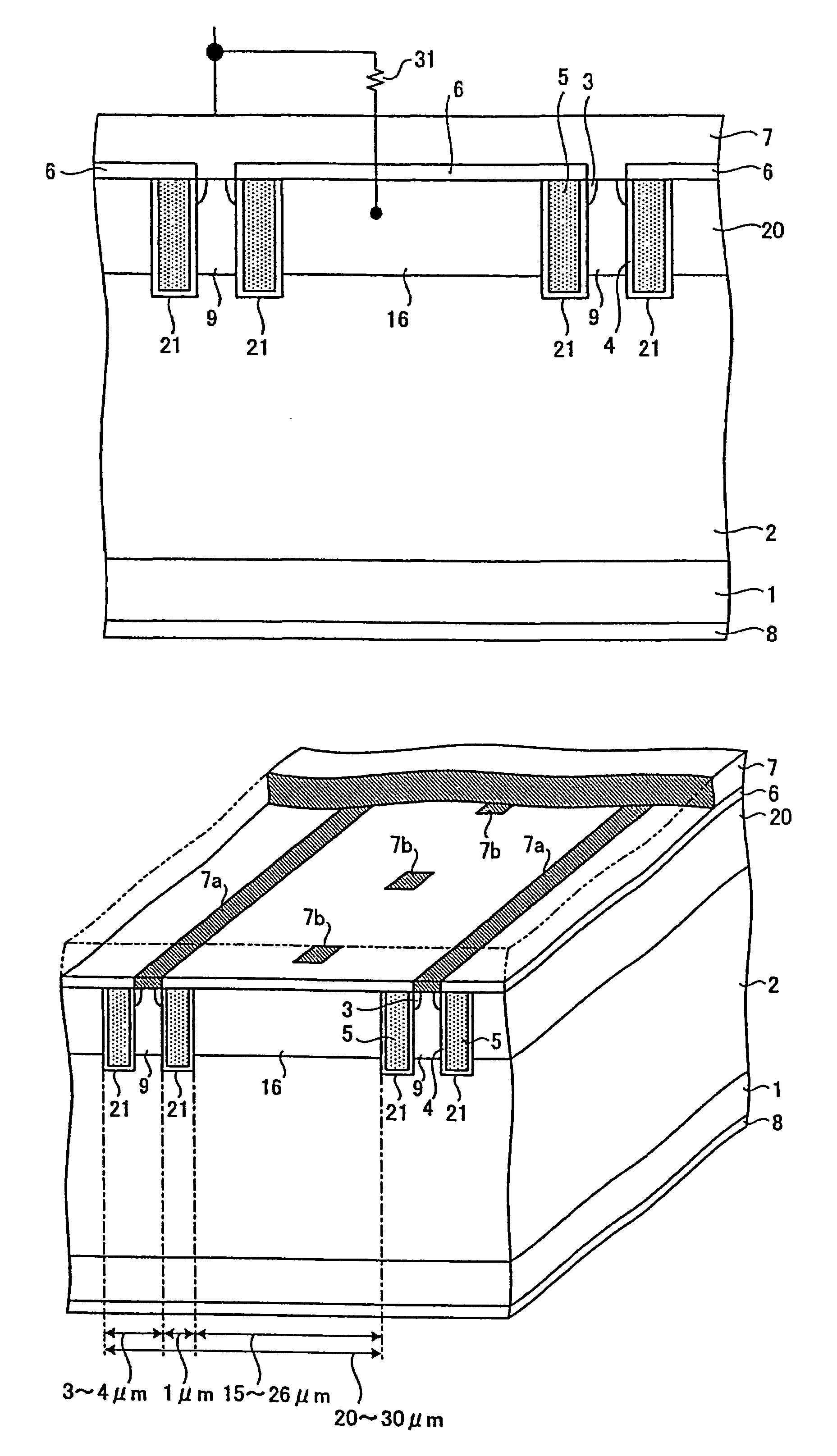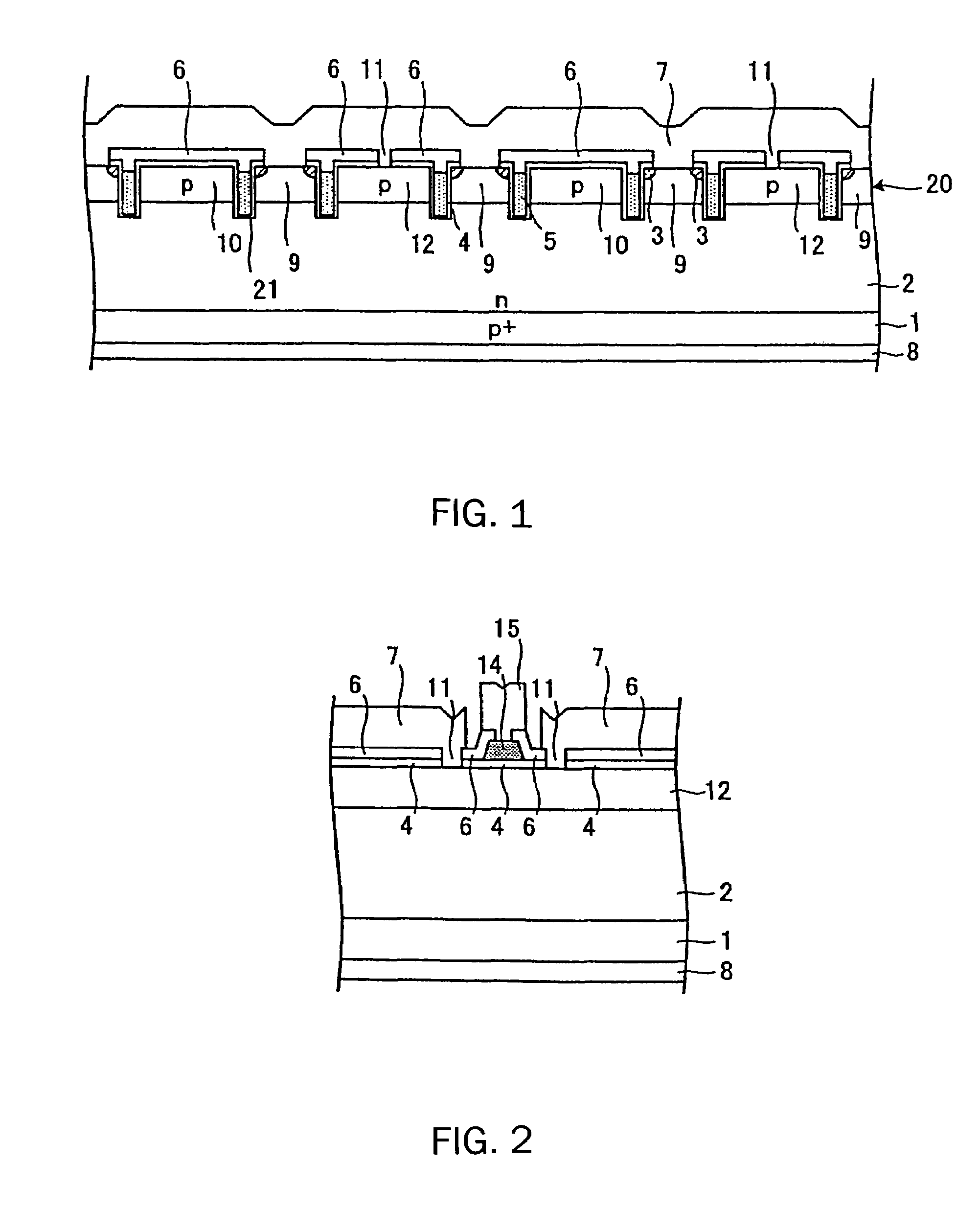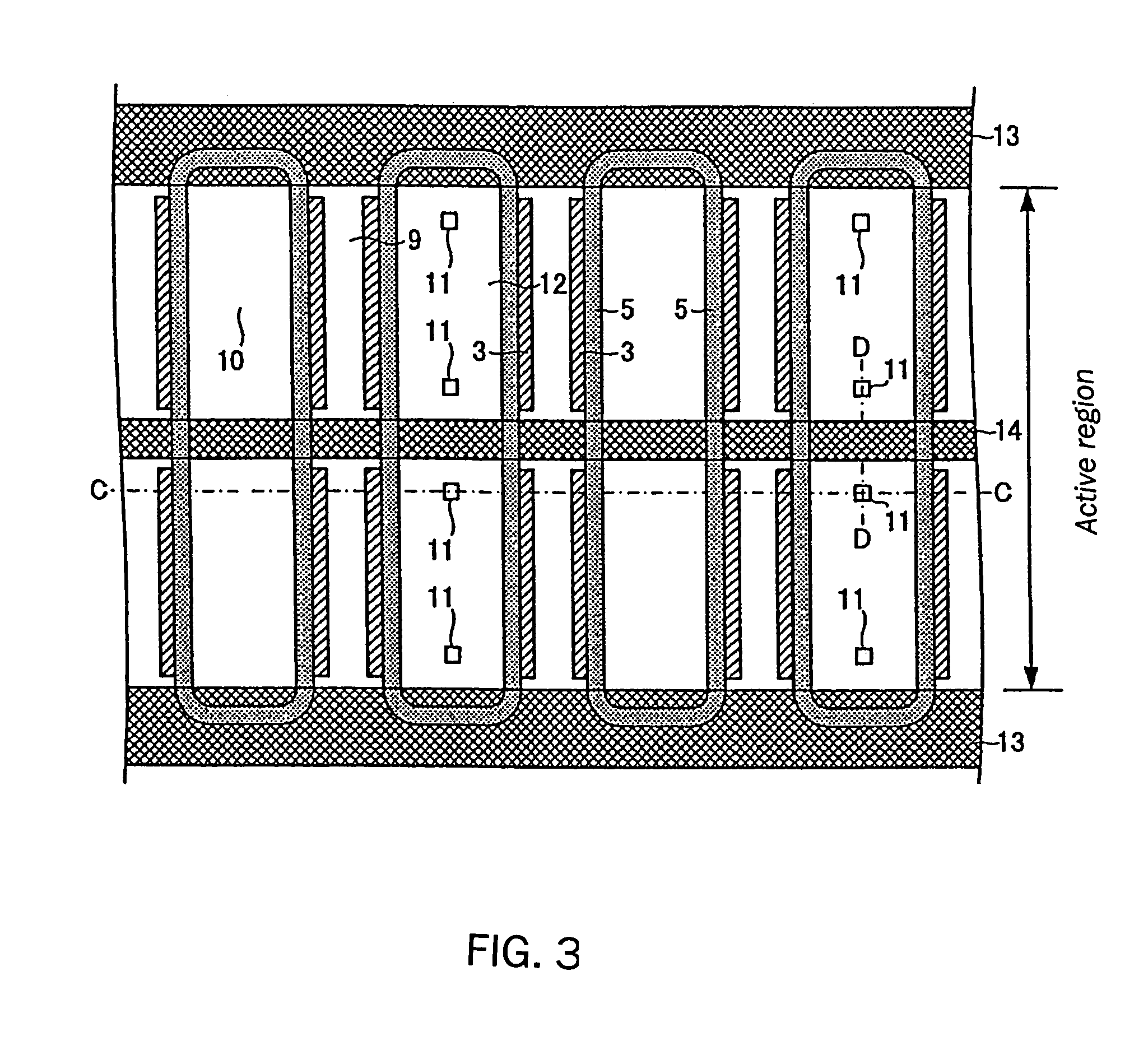Insulated gate semiconductor device
a semiconductor device and gate technology, applied in the direction of semiconductor devices, basic electric elements, electrical equipment, etc., can solve the problems of large turn-on losses, inability to use conventional devices for gate driving, and loss of switching losses, so as to reduce di/dt, reduce turn-on losses and radiation noise, the effect of reducing di/d
- Summary
- Abstract
- Description
- Claims
- Application Information
AI Technical Summary
Benefits of technology
Problems solved by technology
Method used
Image
Examples
first embodiment
[0053]FIG. 3 is a top plan view schematically showing a trench IGBT according to a first embodiment of the invention. In FIG. 3, p-type base regions 9, 10, and 12, n-type source regions 3, gate electrodes 5, gate runners 13 and 14, and contact holes 11 projected to the surfaces of p-type base regions 12 are shown. Gate insulator films 4, interlayer insulator films 6, and emitter electrode 7 are not shown in FIG. 3.
[0054]FIG. 1 is a cross-sectional view along the line segment C—C of FIG. 3 across n-type source regions 3, gate electrodes 5, and contact holes 11 in the vicinity of gate runner 14 in the active region. FIG. 2 is a cross sectional view along the line segment D—D of FIG. 3 across gate runner 14 in the active region and contact holes 11 on both sides of gate runner 14. In FIGS. 1 and 2, the constituent elements not shown in FIG. 3 are shown.
[0055]As shown in FIGS. 1 through 3, n-type drift layer 2 (a second semiconductor layer) is on p-type collector layer 1 (a first semico...
second embodiment
[0071]FIG. 6 is a top plan view schematically showing a trench IGBT according to a second embodiment of the invention. FIG. 7 is a cross sectional view along the line segment E—E of FIG. 6 across contact holes 11 aligned along a side of gate runner 14.
[0072]In the trench IGBT according to the first embodiment (shown in FIG. 1), n-type source regions 3 are formed only in first p-type base regions 9. To facilitate this, the position of the mask for forming n-type source regions 3 and the position of the mask for forming trenches 21 must be set very precisely relative to each other. In order to relax the required mask positioning precision and improve the mass-production efficiencies, it is effective to widen n-type source regions 3. In FIGS. 6 and 7, n-type source regions 3 are widened and formed on both sides of trenches 21. This configuration facilitates distributing n-type source regions 3 uniformly over the active region and reducing the complication of not forming n-type source r...
third embodiment
[0074]FIG. 8 is a cross sectional view for describing the principle of a trench IGBT according to a third embodiment of the invention. Referring now to FIG. 8, p-type base layer 20 is divided into relatively narrow p-type base regions 9 and relatively wide p-type base regions 16 wider than relatively narrow p-type base regions 9. Relatively wide p-type base region 16 is connected electrically to emitter electrode 7 via gate resistance 31 of 50 mΩ or higher. Emitter electrode 7 is in contact commonly with n-type source regions 3 (in relatively narrow p-type base regions 9) and relatively narrow p-type base region 9 in the same manner as in the trench IGBT according to the first embodiment.
[0075]FIG. 9 is a graph describing the simulated relation between the peak current reduction rate and the value of gate resistance 31 in the trench IGBT having the structure shown in FIG. 8. When the peak current value in the structure which insulates relatively wide p-type base regions 16 from emit...
PUM
 Login to View More
Login to View More Abstract
Description
Claims
Application Information
 Login to View More
Login to View More - R&D
- Intellectual Property
- Life Sciences
- Materials
- Tech Scout
- Unparalleled Data Quality
- Higher Quality Content
- 60% Fewer Hallucinations
Browse by: Latest US Patents, China's latest patents, Technical Efficacy Thesaurus, Application Domain, Technology Topic, Popular Technical Reports.
© 2025 PatSnap. All rights reserved.Legal|Privacy policy|Modern Slavery Act Transparency Statement|Sitemap|About US| Contact US: help@patsnap.com



